Welcome to the MUSTELID Venture.
Dave and Anke are a couple of sailors in the Southeast Alaskan archipelago. They live aboard and sail self-built vessels, engine free, for extended periods (up to years at a time) in the remote stretches between towns, living substantially on foraged food, fuel, and materials.
“But we’re getting older,” says Dave. “We envision a more easily handled vessel to complement our more demanding sailing home, to keep us on the water longer.“ So, starting from scratch, they invite you to join them, in this video series, to observe the whole process of conceiving and building a new boat, from identifying needs and purposes, through brainstorming and design, construction and launch, outfit, rig and sea trials—and, eventually, a first voyage.
In this, the first installment, they introduce us to who they are, how they live, and what they propose in a boat.
In this series, Parts 1 – 6 will focus on the boat, MUSTELID. In Parts 7 – 15, Dave and Anke row and sail their way around Chichagof Island—and then some.
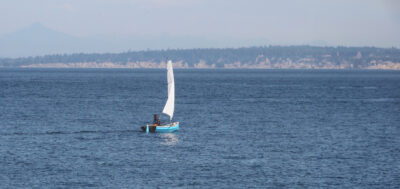
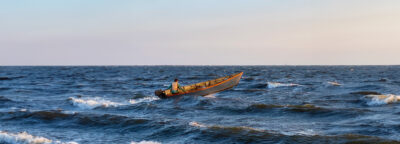

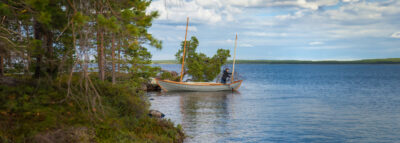
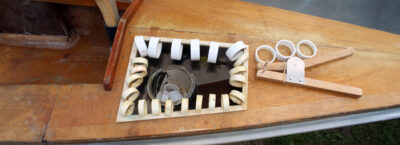
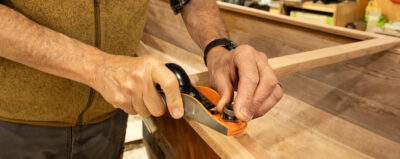
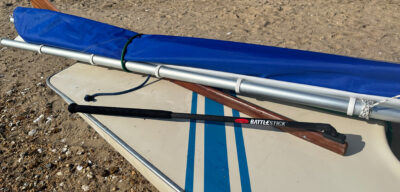
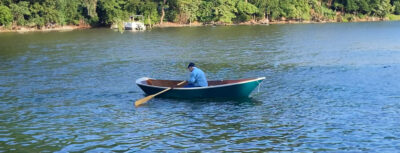
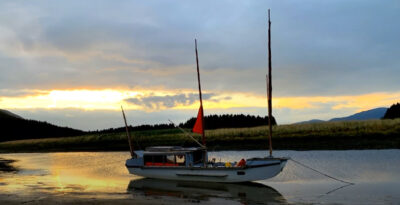
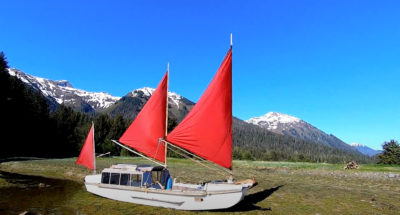
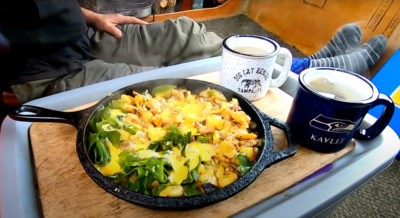
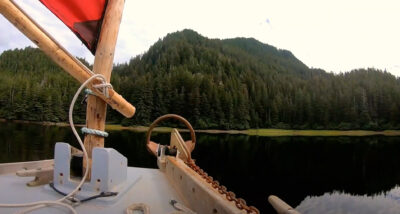
An interesting boat Dave & Anke, but where does the compostable toilet go?
Hi Steven,
Well, our two-bucket composting system didn’t make MUSTELID. For this trip we had to abandon “leave no trace,” but instead followed USFS guidelines for wilderness-area waste disposal (which referred us to local administrative procedures).
Without going deeper into it, I can say that spruce cones are the corn cob o’ the north!
We hope, karmically speaking, that we managed proper disposal practices for remote locations. We certainly were shooting for treading lightly, which local authorities encourage.
Dave Z
Wonderful Episode 1. Such a fabulous way to learn.
Thank you
I find Bolger’s development of the sharpie hull intriguing. I’m thinking of the considerable fore and aft rocker in the bottom, which was also a feature of the old Egret (can’t think of designer/builder’s name, but you know who I mean). By filling the portion of this rockered bottom below the water line with ballast (whether water, stone, concrete, or metal) excellent stability is achieved without excessive draft, though such boats are tender initially, and may heel sharply in a breeze. As most everyone knows, Bolger designed many boats on this principle, so he knew what he was doing. I can certainly see his influences in your designs, including the blunt bows and use of leeboards. I’m wondering if you have found any downsides to the sharpie-type hulls?
Hi David,
Good questions on a big topic. I’ll try to hit the highlights without TMI!
“Commodore” Ralph Monroe’s EGRET did have more rocker than is usual for sharpies, as you say to accommodate the ballast that made it such a legendary sailor. Bolger’s Advanced Sharpie (AS) designs were the closest in approach, and also “thoroughbred” performers.
MUSTELID, though, has fairly low rocker to keep draft low, but also allow comfortable sleeping on the inside of the hull (avoiding the weight and complexity of a built up sleeping platform).
We didn’t use any ballast, aside from the heavy-ish bottom and stores and gear stowed low in the hull. We depend on form stability (maintained by the wide ends) and live ballast (mostly didn’t need it). That and a snug, easily reduced and reefed rig.
In general, most sharpie hulls (at least those with hard chines (Bolger balanced AS excepted)) create turbulent drag making them less “slippery.” This is often offset to some extent by high length-to-beam ratios (as high as 8:1). This in turn affects accommodations and so on. High sides add reserve buoyancy, but also windage on a shallow hull.
We’ve personally found the trade-offs to be a bargain. Great bang-for-the-buck up front and down the road.
Dave Z
Reminds me of Alan and Sherie Farrell’s life building (by hand on the beaches) and sailing/living on the water’s of BC Inside Passage…especially their later years as I followed their progress in developing the shoal draft, junk-rigged CHINA CLOUD. A hard but richly rewarding life for them and obviously for you guys.
Hi Jim,
They were very inspirational to us! First read about them in a WoodenBoat article featuring CHINA CLOUD, then devoured Salt on the Wind and Sailing Back in Time by Maria Coffey. We love their blend of life on the water with social relationships. Also their use of foraged woods from land and sea. And finally, the grace with which they met older age.
Alan designed and they built a plywood vessel, AUGUST MOON, which has been more the route we've taken, lacking his general skill and artistry (and their energy!).
A pair of stars to steer by, that’s for sure!
Dave Z
I like this design best of all of yours (have been following you for years). I hope you will make plans available for us dreamers!
Hi Christopher,
Plans are in the works! I hope to have them ready to release once Episodes 1-6 (which focus on the vessel) are released. They’ll be available for order at Triloboats.com.
Thanks for your interest!
Dave Z
Inspirational…. Dave and Anke, love your freedom. At one point, you were cladding your Double Eagle bottom in copper. I was intrigued as I am trying to do without toxic anti-fouling paint on my own wooden boat (Bolger’s Jochems Family Schooner). I’m finding that I need to scrape at least once every two weeks in our Massachusetts waters to keep her clean. Will you be using copper on your Mustelid design? Have you had good luck reducing bottom growth?
Hi Rob,
The Double Eagle (THE GREAT SEA) was built by Fritz Koschmann and now belongs to our sisters. It doesn’t have copper cladding, but rather some standard copper bottom paint. Anke and I have used copper plate on LUNA, SLACKTIDE and WAYWARD (our present liveaboard), and a copper powder/resin on TRILOBYTE (commercial CopperPoxy) and Andy Stoner’s MARY ELISABETH (DIY).
The CuResin mixes worked pretty well, but fouled quickly and were harder to scrub clean. The ‘light sanding’ required every sailing season is a biggish, messy job.
With plate, we only have had to scrub a light film two to three times a year up here… must be quite a difference in our respective ecosystems! Ours has also lasted considerably longer than Bolger wrote of (as I recall, pennyweight copper lasted about 14 years in harbor, 7 underway… he was out of Gloucester, MA). LUNA’s pennyweight side sheets were going strong at 21 years. A BIG advantage is mechanical protection of the hull.
Copper plate would eat up a lot of MUSTELID’s payload, but we’re thinking about trying a copper, screen-like mesh set in resin and sanded lightly in the manner of CuResin. It’s inexpensive in comparison to plate and looks as though it might provide better mechanical protection than pulverized copper.
Hopefully this coming season?
Dave Z